Your shopping cart is currently empty.
How to Change a String
Note: These instructions assume that you have an instrument with a Wittner tailpiece with four built-in fine tuners. These are equipped on all rental instruments from Classic Violins. If you have a different type of tailpiece, you may need to omit some steps which talk about the tailpiece fine tuners.
- Remove the broken string from the instrument.
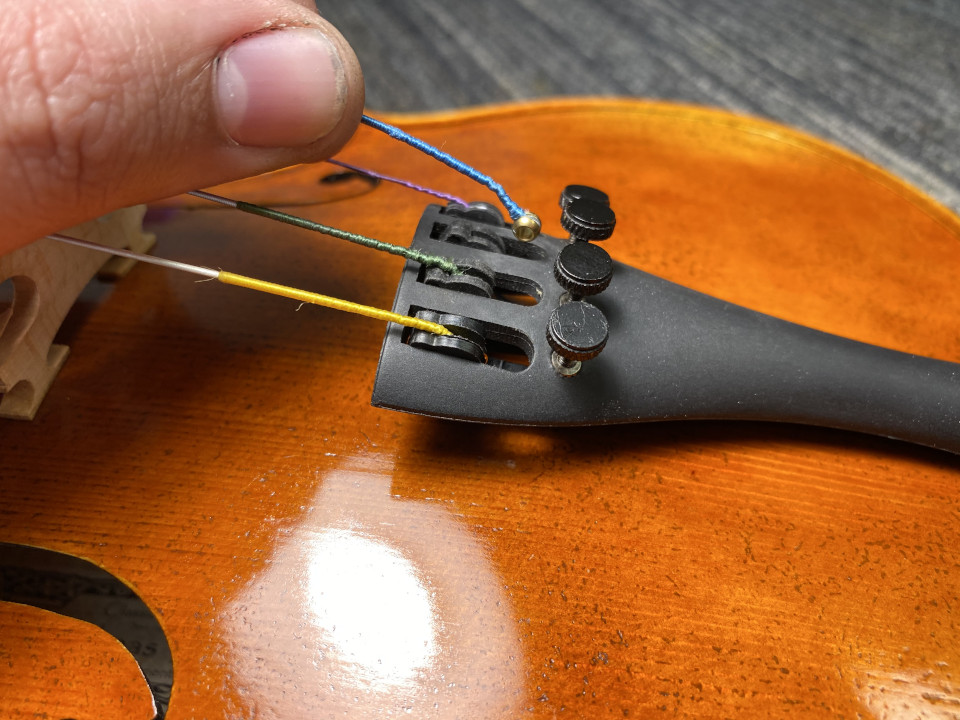
- Check your fine tuner. Approximately 2/3 of the fine tuner screw should be visible above the tailpiece, and the tip of the screw should be in contact with the fine tuner arm under the tailpiece.
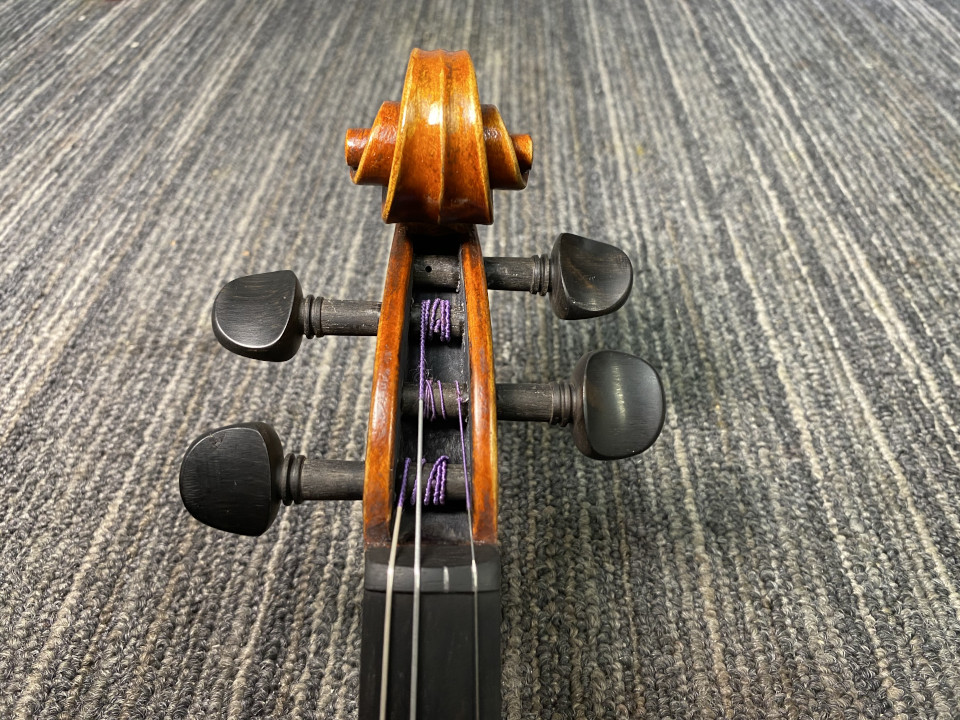
- Make sure the peg is seated in the pegbox. Before installing the new string, lowly and gently turn the peg while at the same time gently pushing it into the pegbox; imaging the motion of using a screwdriver to turn a screw. The peg should feel firm in pegbox, and able to move when you apply some pressure.
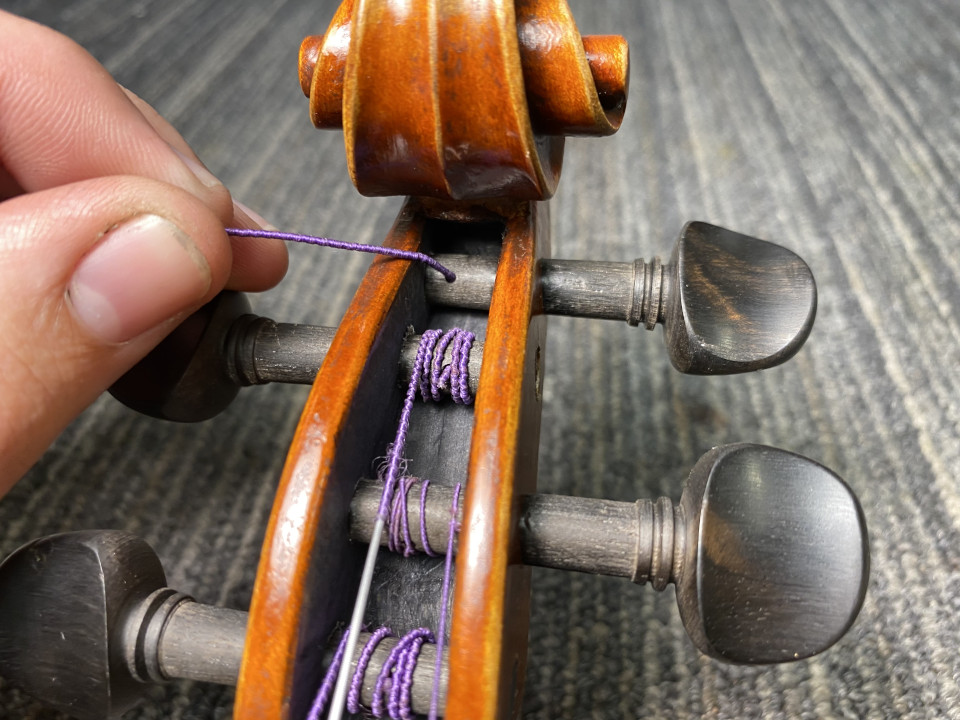
- Turn the peg so that the hole in the shaft of the peg is facing out of the pegbox.
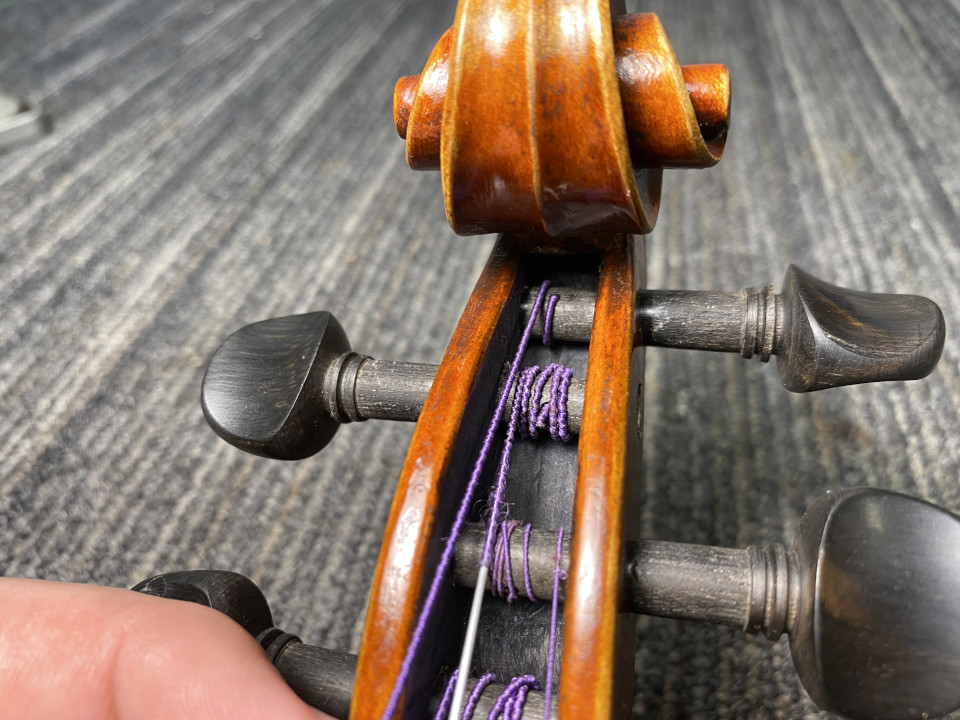
- Carefully attach the tailpiece end of the new string to the tailpiece. The little “ball” on the end of the string will clip in between the two prongs of the fine tuner.
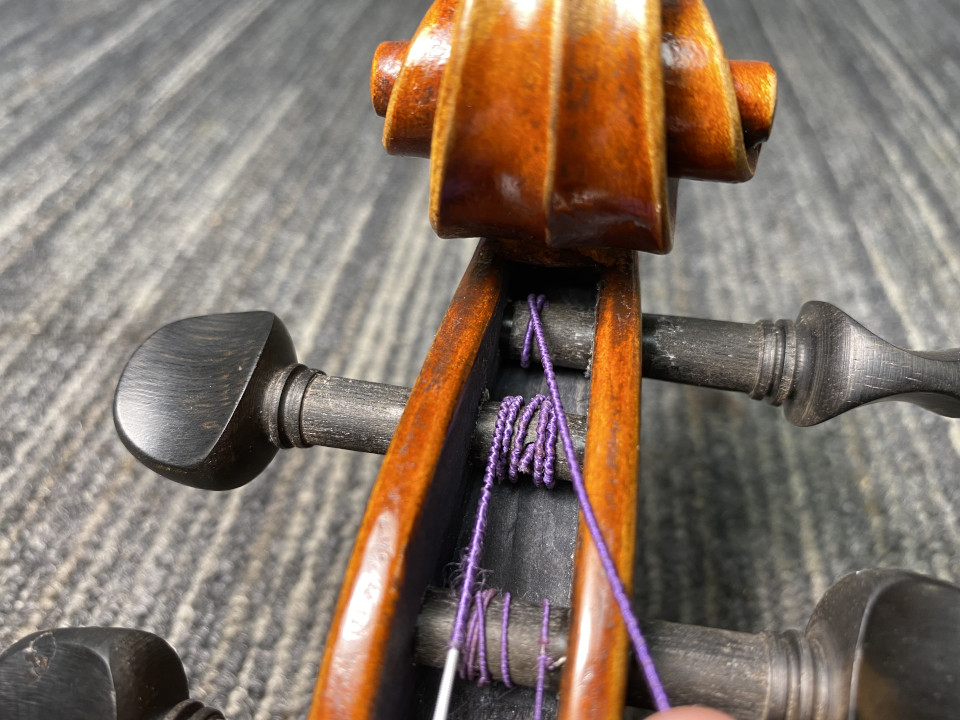
- Carefully insert the straight end of the new string into the hole in the peg. It should pass all the way through the peg, but not quite “stop” against the back of the pegbox.
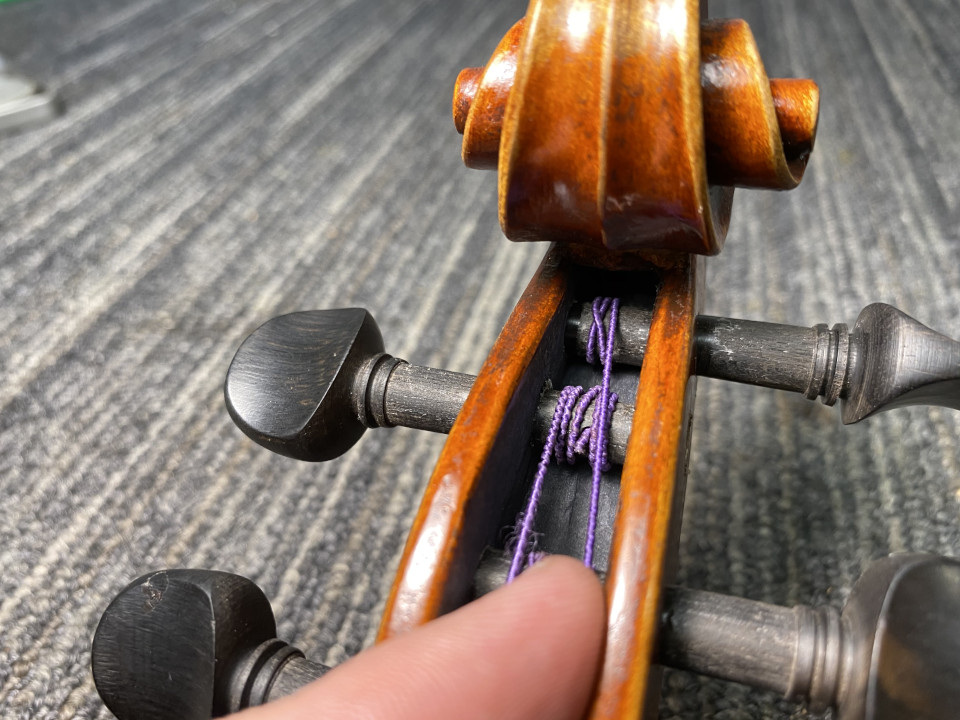
- To wind the string, slowly turn the peg up towards the scroll. When you start winding the string, first wrap it “away” from the peg head for a few turns. After a few turns, pull the string over and across itself on the peg towards the direction of the peg head. Continue slowly winding until the string begins to just feel tight. (Ideally, the string itself should not make contact with the side of the pegbox.)
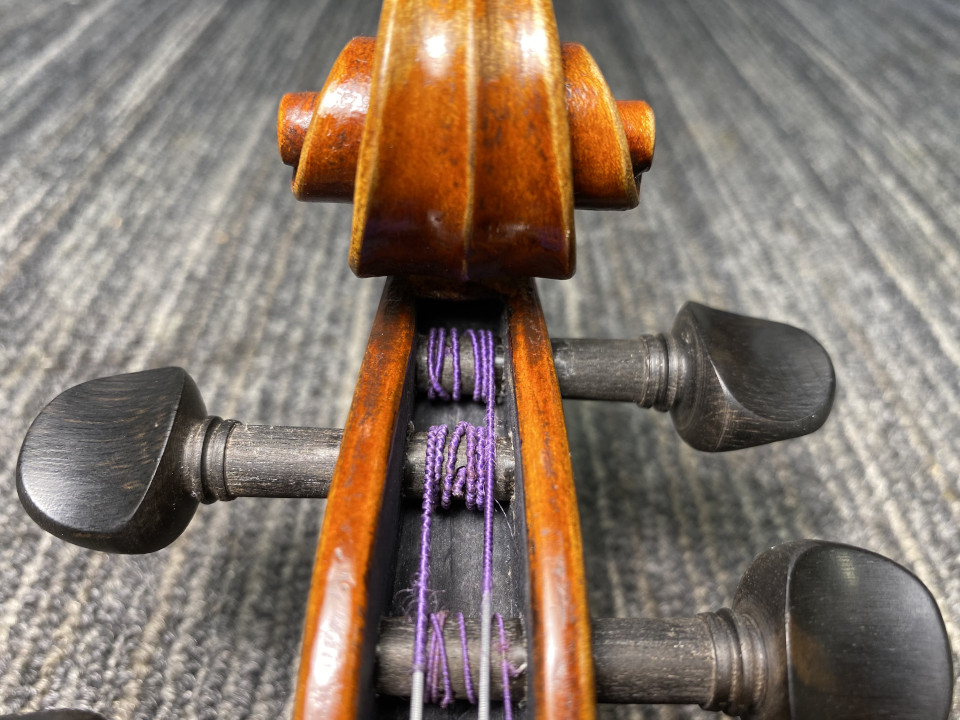
- Check to make sure the string is sitting in the correct slots on the bridge and nut of the instrument.
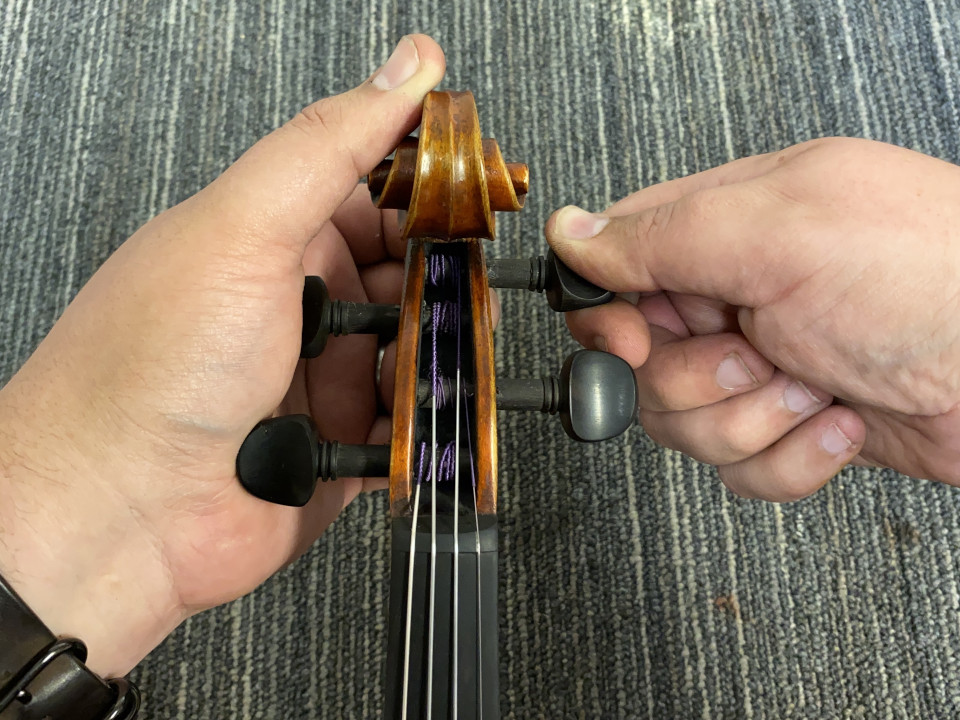
That’s it! You have successfully installed a new string on your instrument! Great Job! From here you will need to tune the string up to correct pitch before playing. A few tips on tuning:
- You will need to do most of the tuning using the instrument’s pegs. The fine tuners are only for very small adjustments.
- Make sure the peg you are tuning is seated well into the pegbox. You may need to apply a little inward pressure while turning it, otherwise it will not hold in place as you tune the string.
- Turn the peg you are tuning very slowly, while constantly plucking the string.
- Remember that strings will come up to pitch fairly quickly, and orchestral instrument pegs are not like geared guitar tuners: small movements will have big effects on the string’s tuning.
- When tuning, you will feel resistance and tension from the string. Violin strings will have anywhere from 8 to 10 pounds of tension on them when in tune, even more for violas and celli. This is okay: rely on your tuner or matching your reference pitch to know where to stop.
- It is easier to slowly tune “up” to a note than to try to move back and forth right around it. If you are having trouble matching the pitch or can’t tell if you’re there, loosen the string with a quarter to half turn of the peg, and begin tuning up to the note again.
- Use the fine tuners only when you have already used the peg to get the tuning very close. The fine tuners, as their name implies, only make very fine adjustments to the pitch of the strings.
- Take your time, and be patient. If you’ve been trying for more than 5 minutes to tune a string, walk away and come back to it later after relaxing and clearing your head. Learning to tune can be a frustrating process, but it is an extremely liberating and rewarding one as well!

